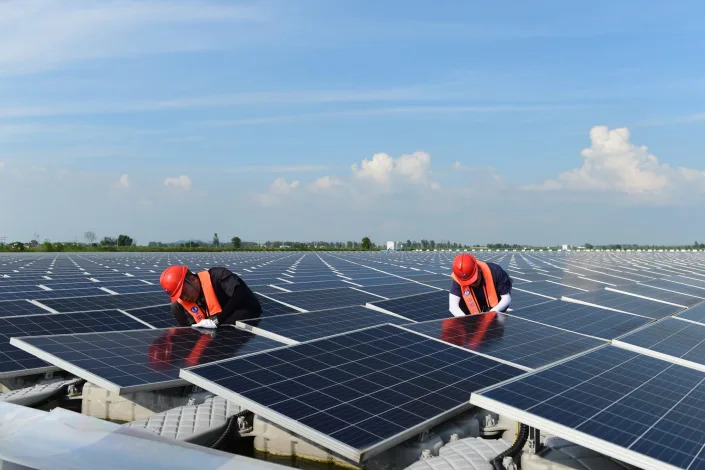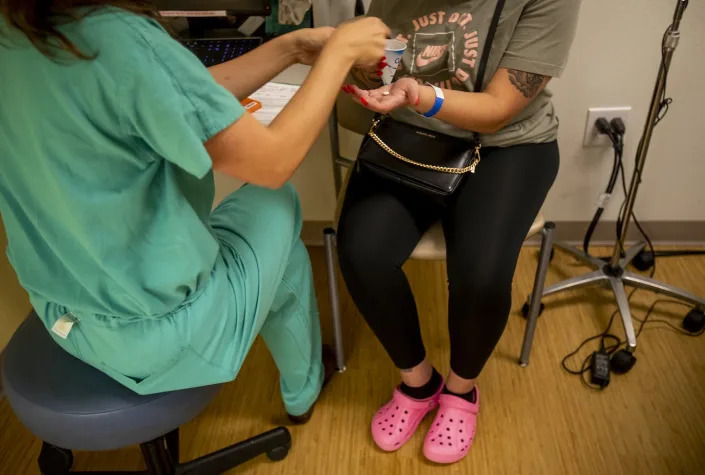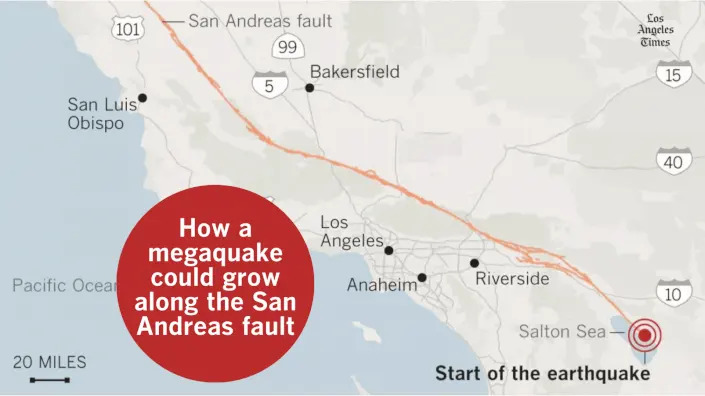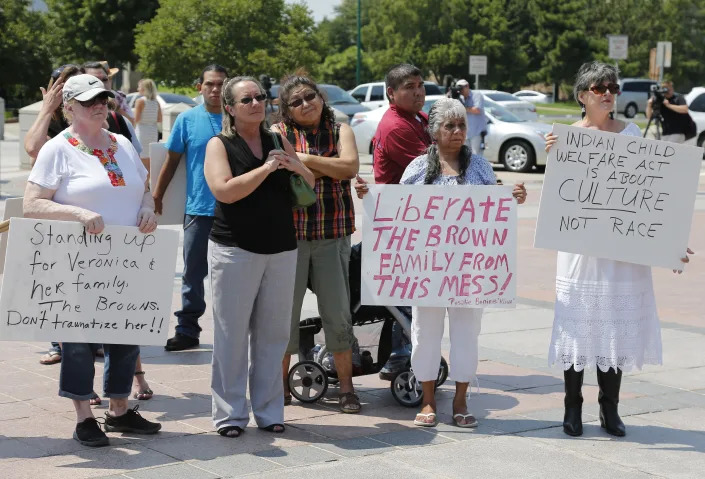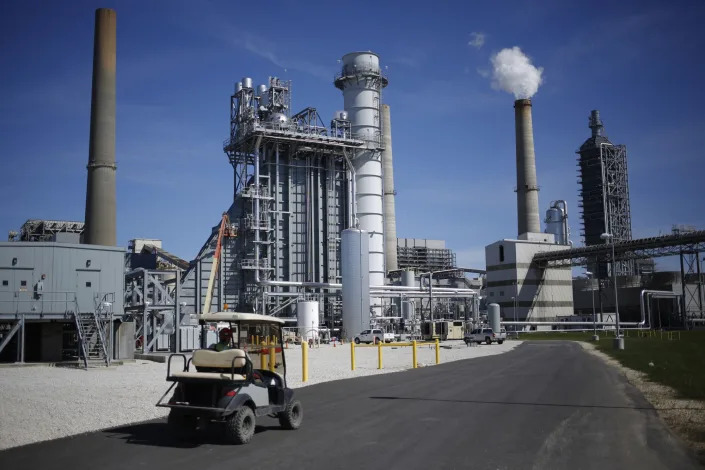Anita Chabria
Thu, February 9, 2023
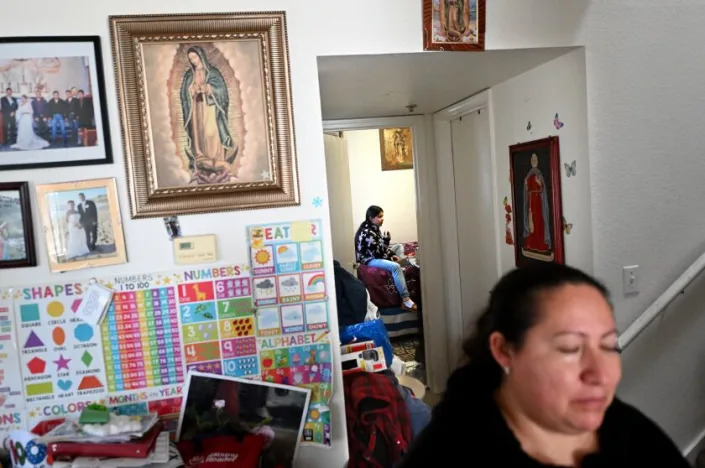
Crystal Avila, 11, sits in the room that she shares with two siblings and her parents, including her mother, Rocio, foreground, at a home in Half Moon Bay, Calif. (Wally Skalij / Los Angeles Times)
The bloodstains that mark the violent deaths of Aixiang Zhang and her husband, Zhishen Liu, are still visible on the ground of the mushroom farm where they were shot last month — fading patches that will be gone with the next rain.
It's a sorrowful sight, that their lives could disappear so quickly and completely into the dirt and gravel of this lonely place.
But it is also hard, in a different way, to look at the inadequate housing just a few feet away where some of the workers here were living: thin-walled rooms on a concrete-block foundation that must be frigid in the thick fog that often wraps this coast; a bleak, shared kitchen with a table topped in stainless steel; a shared bathroom reached by crossing the cold concrete floor of a shed. There is nothing of comfort or warmth in it, nothing that feels like home here at Concord Farms.
Still, these accommodations seem luxurious compared with those at the mushroom grower a few miles away, California Terra Garden, where a disgruntled worker began the shooting rampage that killed seven — three at Concord and four at Terra — on Jan. 23, possibly motivated by a $100 debt the employer had levied against him.
There, a colony of RVs, shacks and even a shipping container served as homes, tarps covering some to keep out the recent torrent of rain. The bathrooms are four port-a-potties, blue siding a splotch of color in a landscape of beaten-down squalor at the base of a flourishing grove of eucalyptus trees.
For decades, the housing we consider fair and livable for agricultural workers — even if we don't admit it — has hinged on what Half Moon Bay Vice Mayor Joaquin Jimenez describes as the "plantation mentality" of California's farming industry.

Activist and vice mayor Joaquin Jimenez stands near an area on a farm where a worker was killed by a mass shooter in Half Moon Bay. (Wally Skalij / Los Angeles Times)
"Workers are only here to work, and that's it," is how he described it, as we drove through this town where poverty and prosperity are neighbors but rarely mingle.
The Ritz-Carlton lords over a prime section of the beachfront bluffs here, barrel waves crashing against the sheer cliffs below, guests sipping $24 glasses of Paso Robles Cabernet. The world-famous Mavericks surf spot is minutes away.
Both are draws for the tech millionaires from Palo Alto, just over the Santa Cruz Mountains, who have turned this once-sleepy pit stop of farms into a place of trophy mansions and Teslas, snapping up land and driving up rents — but rarely venturing up the unpaved trails that lead to places like Terra Garden.
After the shooting, Gov. Gavin Newsom weighed in, calling housing at Terra Garden "deplorable." But he didn't call it surprising.

Activist and vice mayor Joaquin Jimenez stands near an area on a farm where a worker was killed by a mass shooter in Half Moon Bay. (Wally Skalij / Los Angeles Times)
Because dilapidated, overcrowded housing for farmworkers has long been the norm, not the exception.
"Those conditions are well established and known," Newsom said, adding the issue is "complicated."
Sure, some of it is complicated. But some of it is not.
The simple truth is our entire system of agricultural production is based on giving workers as little as possible, under circumstances that make it hard if not dangerous to complain — whether that means being undocumented or just so poor the loss of even a day's work is devastating. Even the good actors, the growers who pay better wages and have modernized housing, often offer conditions most non-immigrant workers would refuse.
Vulnerable workers keep quiet because they know life can always get worse. Jimenez remembers being 4 years old, hiding in the Brussels sprouts while federal immigration authorities hovered in helicopters overhead.
Where it gets thorny, to Newsom's point, is why nothing changes: Those with the power to crack down on miserable housing often don't because they know there is no place for farmworkers to go.
"I understand there are laws," said Jimenez, as we bumped through town in his electric blue ’92 Chevy pickup, bay leaves from a recent vigil drying on the dashboard. The son of farmworkers, he lived in a house with 21 people as a kid, earned a master's degree and came back to fight.
But if the city of Half Moon Bay, the county of San Mateo and even the state of California close down subpar housing, red-tag it or enforce those laws that make it illegal to stuff humans in shipping containers and shacks with no running water or insulation, what happens to the workers, and their children?
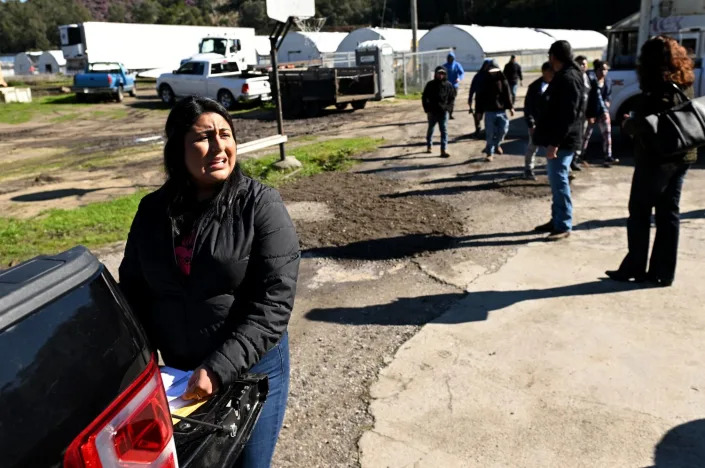
Vanessa Rodriguez of the nonprofit Ayudando Latinos A Soñar distributes checks to farmworkers at a farm where a mass shooting happened in Half Moon Bay. (Wally Skalij / Los Angeles Times)
Jimenez and other advocates had visited Terra Garden many times before. Two advocates had delivered plastic sheeting to cover the roofs just hours before the shooting.
Eight families, 27 people, were allegedly living there. Workers were making about $3,000 a month and paying $300 of that in rent.
Where would they have gone if their housing, pitiful as it was, was taken away in a town where market-rate studio apartments rent for more than $2,000 a month? Where the median home price is $1.2 million? Where the $300 hovels seemed like a reasonable offer, or at least an affordable one?
"We would be responsible for people being homeless, or moving into a worse situation," Jimenez said of that conundrum. "But it makes you think, is my solution better than the problem?"
Rocio Avila sleeps in a room smaller than the average prison cell.
She shares it with her husband, Roberto Hernandez, and their three children, paying $500 a month.

Rocio Avila watches her children Angel, 5, and Perla, 8, in the bedroom in their home in Half Moon Bay. The family of five sleeps in this bedroom. (Wally Skalij / Los Angeles Times)
Perla, 8, and Angel, 5, wedge in with their parents on a queen-size bed. It's pushed into the corner, but it still takes up nearly the entire space, leaving only a narrow walkway wide enough to open the door.
Crystal Avila, 11, is Avila's eldest daughter. She's an artist with long pigtails and rosy cheeks who sleeps on the floor at the foot of the bed, a little nest between the frame and the closet, underneath a picture she drew of pink cherry blossoms.
"We have the privilege to have something other people don't," Avila told me when I visited her home this week. She is one of the lucky ones, she said. She has a home with running water and power, bathrooms inside and a stove that works.
Still, Avila is desperate for a bigger house, one where the kids can be free instead of trying to stay out of the way.
Crystal dreams of a big bedroom, with space for a desk — "living a good life," as she puts it.
That means knowing "where you're going to study. Where are you siblings going be, where your parents going to be? And, like, to be calm and know that you're in a safe place," she tells me.
Every fourth Friday, Crystal and her mom march in a vigil downtown for affordable housing. Avila isn't sure the town really cares.
"We are part of the community too," she said. "They know this, and they don't want Half Moon Bay to grow."
Every farmworker is in the same plight, in one way or another.
"Gloria" worked at one of the mushroom farms, but she doesn't want me to use her name. She rents a room for $1,200 a month in a two-bedroom house shared by 10 people, where she is not allowed to use the kitchen.
She buys all her food from the restaurant where she works nights.
She is trying to save money, $10,000, to bring her daughter from Mexico. They haven't seen each other in a year, a little death every day.
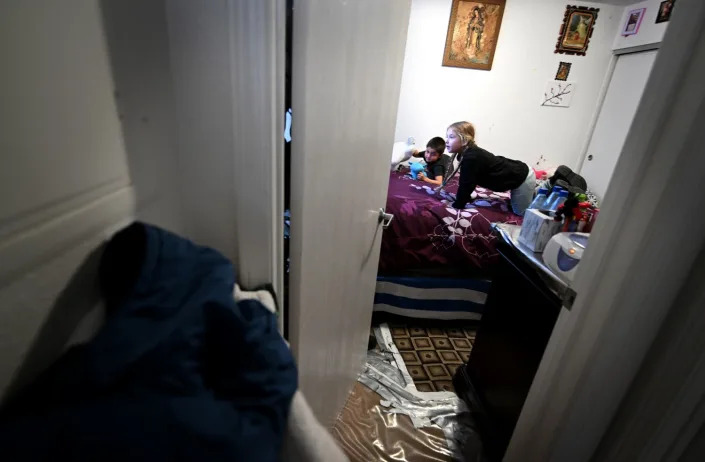
Angel Avila, 5, and is sister Perla, 8, play in a room they share with another sibling and their parents at home in Half Moon Bay. (Wally Skalij / Los Angeles Times)
But Gloria can never seem to get ahead, never save enough on her $15.50 minimum wage, in a place where it would take about $38 an hour to live an average life.
She's back working at the farm during the day, though the shock is still clear in her eyes. She needs the money.
Maurilio Lopez Chavez understands that frustration.
His kids are with him — Leonardo, 1, and Sochi, 6.
Sochi dreams of being a chef, or maybe a doctor. But Lopez Chavez works at a flower farm, and the rain destroyed the roots of the dahlia crop. Now there are no flowers to harvest, no work, no money coming in.
He lives in an apartment that is owned by his employer. He pays $1,500 a month, what the owner says is a discounted rate good only as long as he remains employed at the nursery. But Lopez Chavez owes that amount, destroyed crop or not.
He can't get unemployment benefits because he is undocumented. He's come to Ayudando Latinos A Soñar, known as ALAS, a local nonprofit, for food and help. In a recent survey by UC Merced, more than 60% of farmworkers said they've had trouble paying for food since the pandemic hit.
"I don't care for myself," Lopez Chavez said as he waited for donated Safeway gift cards.
But the kids, they're hungry.
::
The predicament of farmworkers across California has grown worse in recent years.
The pandemic brought death, the crowded living conditions letting COVID-19 sweep through homes and workplaces. Yet in the Merced study, nearly a quarter of workers didn't know they had a right to paid sick leave.
Climate change has brought more extremes, fire and floods that leave workers picking strawberries in downpours and grapes in thick smoke. More than a third of respondents in the Merced study said they have trouble keeping their house warm enough or cool enough as weather becomes more severe.
Fifteen percent said they feel uncontrollable worry; 14% feel depressed or hopeless.
All of which makes me wonder: Would the system really fall apart if we demand better for workers, or if we supported them when they demand better for themselves? If we scrutinized labor conditions of America's farmworkers with the same urgency we use to ensure our mushrooms are organic, our coffee fair-trade and our chickens roaming free?

Farmworker Yesnia Garcia stands in her living room of her modular home on a farm in Half Moon Bay. (Wally Skalij / Los Angeles Times)
A few miles from Terra Garden, Yesenia Garcia lives in a cute, wood-sided modular home on Cabrillo Farms.
Flowers and vegetables are planted around its borders, and inside, laminate wood floors flow into a kitchen where glass tiles decorate the backsplash.
There are four bedrooms, two baths, and a washer and dryer that make her busy life as a working mother easier. A big television hangs on the wall of the living room, where her two sons' toy trucks are lined up next to the couch.
Garcia is on the newly formed San Mateo County Farmworker Advisory Commission, and this is the kind of housing she is fighting for.
Jimenez, the vice mayor, said the owners of Terra Garden are considering building something similar.
But it shouldn't take seven deaths to make us demand they do.
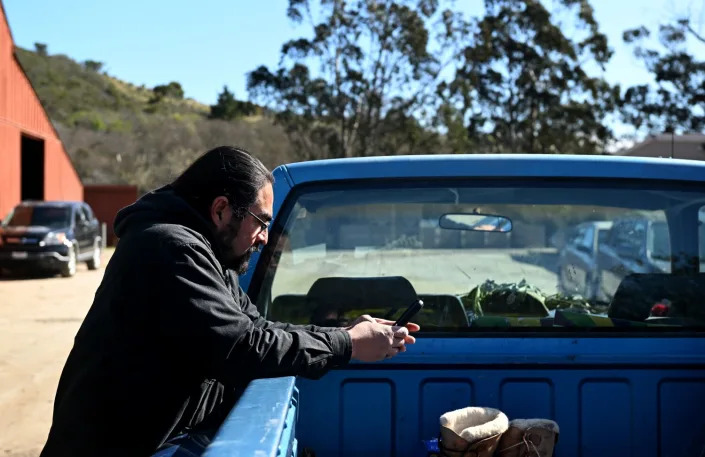
Activist and vice mayor Joaquin Jimenez checks on farmworkers in Half Moon Bay. (Wally Skalij / Los Angeles Times)
And that's the pain — the trauma and suffering of decades, not moments — the farmworkers of Half Moon Bay want you to remember when the next mass shooting tries to tear our attention away from this community.
Honor the dead.
But don't forget: Something needs to change for the living.
This story originally appeared in Los Angeles Times.
